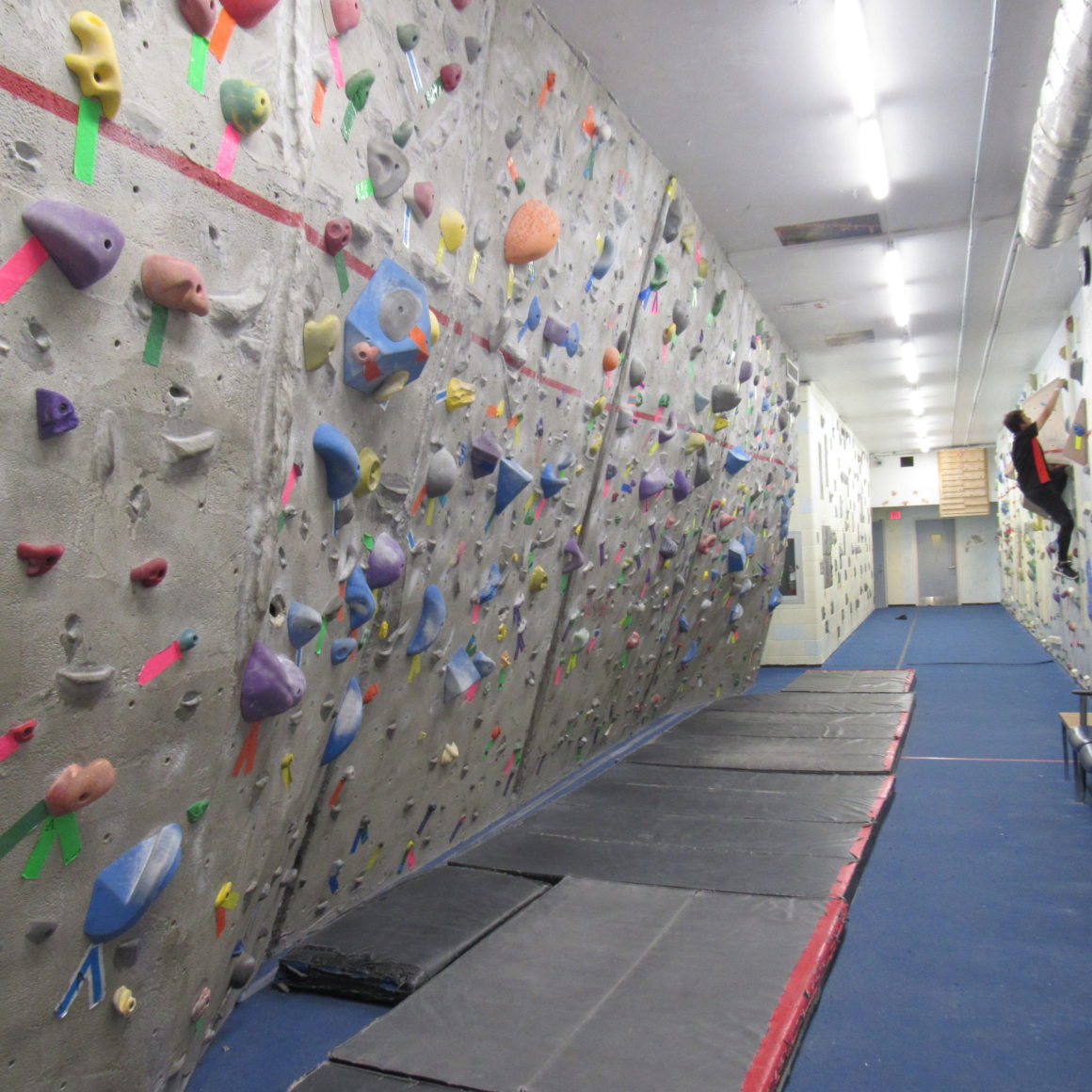
Climbing high in the Kinesiology basement
By Scott Strasser, July 26 2016 —
Recent graduate Jodi Garvin has a slight fear of heights. But that fear hasn’t stopped her from pursuing rock climbing at the University of Calgary.
“Even just going up there scares the crap out of me,” Garvin said with a laugh. “I used to climb in junior high and was even on a team. Then I quit and now I just boulder.”
We’re hanging out in the basement of the Kinesiology complex at the U of C’s bouldering wall. Garvin has just finished a bouldering session — climbing without the use of ropes or a harness.
After a long hiatus, Garvin started climbing again this spring. She said she enjoys the sport’s mental and physical challenges.
“When I [was younger] it was so easy. I was good at it and it came naturally. Now it’s hard,” she said.
Curious, I recently decided to give climbing a try. I participated in a climbing camp when I was a kid, but this was going to be my first time scampering up a rock wall in many years.
I quickly learned that climbing as an adult and climbing as a kid are two very different things. As an energetic 10-year-old, I could climb up the wall at Mount Royal University 10 or 15 times in a single session. This time, I’m gassed after only 20 or 30 minutes. My forearms are tired and my fingers ache.
Rock climbing is one of the most intensive full-body activities you can do, as getting up the wall uses virtually every muscle group.
Nick Martin, one of the climbing program coordinators at the U of C’s Outdoor Centre, said climbing is about figuring out how to harness all of your body’s muscles to move a certain way.
“The more you try to pull and force your way through a specific movement, the less efficient you actually are,” he said.
Martin has been climbing for about 10 years, and seriously for about six. He’s nursing an injury at the moment, but before that he was climbing at least four times a week.
Like Garvin, Martin said he enjoys the psychological aspect of climbing as well as the physical side.
“It’s a combination of your physical skills, your technical knowledge and your mental game,” Martin said. “Part of that personal challenge comes from controlling your fear and making good decisions, especially as you move along in the climbing world. That fear management is a huge aspect of it.”
Rock climbing at the U of C is a niche sport. Many students don’t realize the university has the oldest public climbing wall in Calgary.
The U of C’s 13-metre climbing wall was built in 1986. It definitely doesn’t look as new as other facilities in Calgary, such as the climbing walls at MRU or the myriad of climbing and bouldering walls at the Calgary Climbing Centre.
“The people who come here are loyal regulars,” Martin said. “I wouldn’t say it’s the most popular climbing gym in Calgary. Most people don’t think of the facility we have when they think of indoor climbing.”
Despite its age, the U of C’s climbing wall offers unique benefits.
While climbers still use the wall for recreation and practice, Martin said the Outdoor Centre is focused on teaching practical mountain skills. The centre offers many programs that help climbers transition from indoor to outdoor climbing, including crevasse rescue, multi-pitch and crack-climbing courses.
“We [teach] all sorts of those skills that typically if you want to learn, you have to hire a guide, go outdoors and simulate them at a fairly high cost,” Martin said.
For students interested in learning how to rock climb, Martin said bouldering is a good way to start.
The U of C’s bouldering wall is set with new routes regularly. The wall only allows climbers to go a certain height, meaning there is minimal risk if you fall.
Students looking to climb the wall with ropes and a harness must first pass a belay test. The tests cost $5 and can be taken Monday–Friday from 5:00–9:00 p.m. at the Outdoor Centre.
